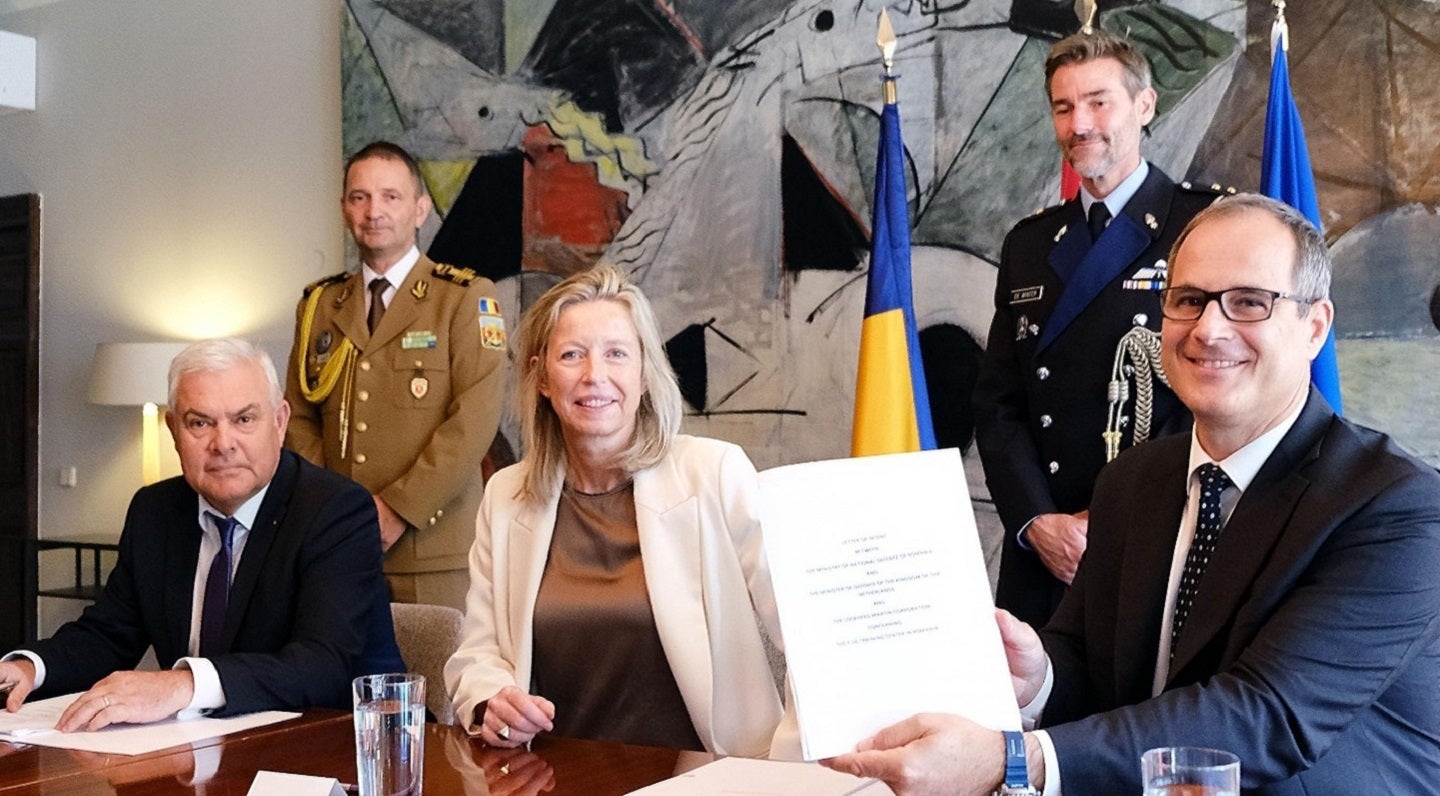
The Romanian Ministry of National Defence, the Ministry of Defence of the Netherlands and the American defence prime Lockheed Martin have signed a Letter of Intent (LoI) on 29 August to establish an F-16 Pilot Training Centre in Romania.
The new facility will focus on ensuring effectiveness and safety of Romanian pilots flying and operating F-16 fighter jets; this deal could eventually expand to include training for other nations.
“Once details are finalised, we are confident the training centre will ultimately benefit Romania and other regional F-16 operators, including potentially Ukraine,” stated the vice president and general manager of the Integrated Fighter Group, OJ Sanchez.
Based in Borcea, in south-eastern Romania the training facility will be constructed at the country’s 86th Air Base, where its 53rd fighter squadron operates Lockheed Martin F-16s, the Romanian Minister of National Defence Angel Tîlvăr stated.
The F-16 Fighting Falcon, which is manufactured by Lockheed Martin since 1979, is a multi-purpose jet and one of the world’s most abundant fighter aircraft. Lockheed Martin delivered about 4,600 F-16s to over 25 countries. More than 3,000 F-16 fighters are currently operational worldwide.
Learning the importance of aerial supremacy from Ukraine
As it stands, Ukraine’s Armed Forces continue their counteroffensive against invading Russian forces entrenched in the south and east of the country across a network of defensive positions with layers of minefields to prevent large-scale movement of armour.
However, without decisive aerial support from its own sovereign airspace, it will be difficult for Ukraine’s gruelling offensive to have a decisive impact.
Russian aerial strikes have indiscriminately attacked Ukrainian personnel, critical infrastructure and military equipment and resources. The invader’s use of Iranian-made Shahed unmanned aerial vehicles (UAVs) and fighter aircraft prove to be a formidable and ongoing threat to Ukraine’s success.
This has led the United States – the largest military lender to the struggling nation, having provided a diverse range of equipment worth $43bn since the start of the invasion – to green-light to its allies and partners operating the F-16 to send these fighter jets to Ukraine.
This decision has prompted the intention of Europe and the original manufacturer Lockheed Martin to establish a new pilot training centre, based in Romania, for use by F-16 operators continent-wide.
Strengthening Romania’s aerial skillset
According to GlobalData intelligence, the Romanian Air Force operates 13 F-16A units and 4 F-16B units – the difference being that the A variant is a single-seat and B a tandem model.
“Through this centre, Romania commits to provide a high-quality training environment, with access to technical resources and state-of-the-art know-how not only for the Romanian pilots, but also for those from the Allied and partner states, including Ukraine” Tîlvăr added.
To implement this project, the Royal Dutch Air Force will contribute by deploying some F-16 aircraft to the 86th Air Base, thus facilitating the effective training of the Romanian pilots.
Likewise, Lockheed Martin will provide the highest-level technical support through flight instructors and technical-engineering personnel. This solid co-operation ensures complex training, in accordance with the international standards.
The original equipment manufacturer Lockheed Martin has previously expressed the enduring development of the F-16 jet. “New production of the F-16s leverage structural and capability upgrades that “ensure the international F-16 fleet can operate to 2060 and beyond” according to the original equipment manufacturer.”
As the prolific multi-purpose jet continues to evolve, and more nations across the European continent form F-16 initiatives such as this LoI, then Nato’s eastern flank will be more secure than at any time before.



